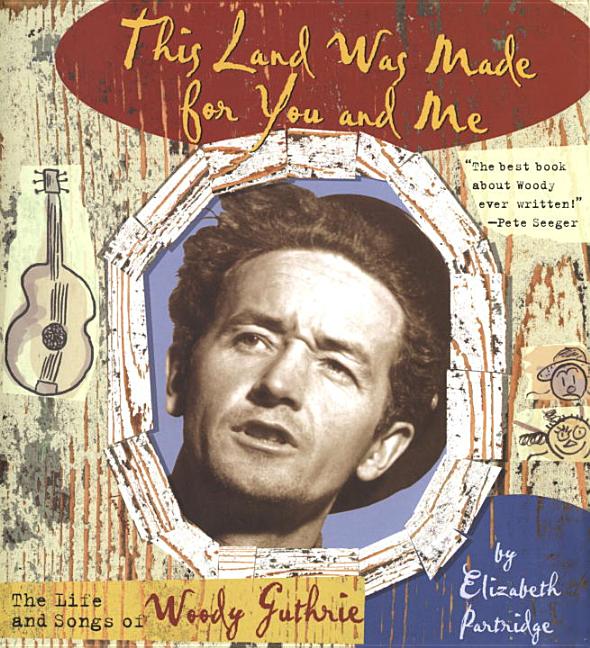Book Description
for This Land Was Made for You and Me by Elizabeth Partridge
From Cooperative Children's Book Center (CCBC)
Older children and teens who embark on this marvelous biography of Woody Guthrie will find at least one familiar reference point as they read. Most of them have probably joined in on a joyous rendition of "This Land Is Your Land" at school. They might be surprised, however, to learn that "This Land Is Your Land" was written in 1940 as a counterpoint to the romantic sentiments of Irving Berlin's "God Bless America." "His song caught the bittersweet contrasts of America: the beauty of our country, and the desperate strength of people making do in impossibly difficult times," writes Elizabeth Partridge in her preface to this beautifully designed, dynamic volume. "All you can write is what you see," Guthrie wrote across the bottom of his hand-written lyrics for the song, and that is what Woody Guthrie did over and over again in his often difficult lifetime. Through his music, he voiced the struggles and the suffering he saw during the Great Depression, the spirit of and courage of workers fighting for unions, the tragic death of sailors during World War II. He combined his knowledge of the songs sung by everyday people with a genius for storytelling, and words and a passion for social justice. But at the same time that Guthrie was creating an unparalleled legacy he was running–from responsibility (often leaving his first wife alone with their three young children for months), and from fear. He couldn't escape, however, when Huntington's Disease, the same illness that made his mother so erratic and unpredictable when he was a child, began to affect his body and his mind. Elizabeth Partridge interviewed folksinger Pete Seeger and Woody's son, folksinger Arlo Guthrie, and drew on taped interviews of others who knew Woody, as part of her extensive research to create this honest and inspiring work. Honor Book, CCBC Newbery Award Discussion (Age 11 and older)
CCBC Choices 2003 . © Cooperative Children's Book Center, Univ. of Wisconsin - Madison, 2003. Used with permission.


